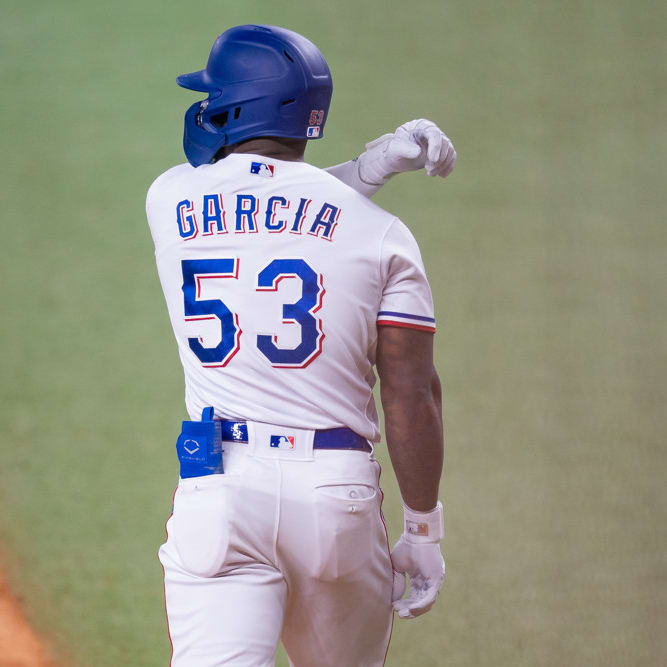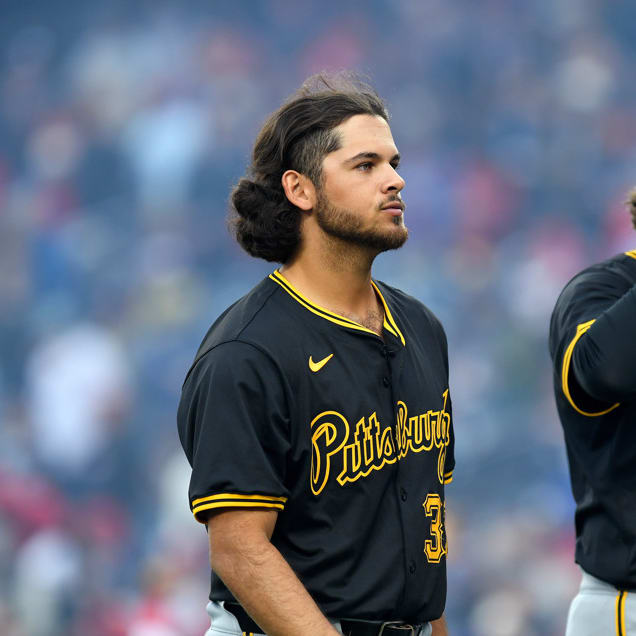Welcome to the final set of ranked pitchers, crossing over to the 28-point pitchers in our system and closing out the top-80 starters on the DT rankings.Here's a quick review of the rankings:
Introduction to the ratings
Rating NFBC SP 1-10
Rating NFBC SP 11-21
Rating DT SP 22-30 (and 19)
Rating DT SP 31-40
Rating DT SP 41-50
Rating DT SP 51-60
Rating DT SP 61-70
There are a few pitchers whose names have yet to be called, players who fall short of the 28-point threshold yet whose ADP suggests that they are worthy of consideration before this point in the player pool. I have a few follow-up pieces in the works, with the intent to review the new system and to detect biases inherent in the process, and these players that missed the cut will soon be covered.
Jason Hammel
NFBC ADP: 75
DT Rank: 71
| K | 6 of 10 |
| ERA | 3 of 6 |
| WHIP | 4 of 6 |
| W | 2 of 3 |
| IP | 5 of 10 |
| Stuff | 4 of 8 |
| Mechanics | 5 of 7 |
| TOTAL | 29 of 50 |
Welcome to the final set of ranked pitchers, crossing over to the 28-point pitchers in our system and closing out the top-80 starters on the DT rankings.Here's a quick review of the rankings:
Introduction to the ratings
Rating NFBC SP 1-10
Rating NFBC SP 11-21
Rating DT SP 22-30 (and 19)
Rating DT SP 31-40
Rating DT SP 41-50
Rating DT SP 51-60
Rating DT SP 61-70
There are a few pitchers whose names have yet to be called, players who fall short of the 28-point threshold yet whose ADP suggests that they are worthy of consideration before this point in the player pool. I have a few follow-up pieces in the works, with the intent to review the new system and to detect biases inherent in the process, and these players that missed the cut will soon be covered.
Jason Hammel
NFBC ADP: 75
DT Rank: 71
| K | 6 of 10 |
| ERA | 3 of 6 |
| WHIP | 4 of 6 |
| W | 2 of 3 |
| IP | 5 of 10 |
| Stuff | 4 of 8 |
| Mechanics | 5 of 7 |
| TOTAL | 29 of 50 |
Trevor Bauer NFBC ADP: 70 DT Rank: 72| K | 6 |
| ERA | 2 |
| WHIP | 3 |
| W | 2 |
| IP | 7 |
| Stuff | 5 |
| Mechanics | 4 |
| TOTAL | 29 |
The delivery morphs every season and he has a plethora of pitches in his arsenal, but the lack of consistency can be maddening for a player who is often trying to play three-dimensional chess on the mound despite not yet having mastered checkers. He falls to the bottom of the 29ers due to the likelihood that he will pitch a lot of innings in 2017 and that those innings will be a drag on the ratios with not enough help in the strikeout department to compensate.
Aaron Nola
NFBC ADP: 46
DT Rank: 73
| K | 7 |
| ERA | 3 |
| WHIP | 3 |
| W | 2 |
| IP | 3 |
| Stuff | 4 |
| Mechanics | 6 |
| TOTAL | 28 |
The problem with Nola's case arises when looking at his medical report as well as his track record; the right-hander had a low-grade strain of his UCL, an ailment that cost him the last six weeks of last season, and he opted to forego surgery in preference to rest and rehab. I have expressed my pessimism for similar pitchers under the same umbrella, and his three points (out of 10) in the innings category reflect my skepticism as to Nola's innings. Toss in the fact that he has never put up an ERA under 3.58 at Triple-A or the majors, and we are left with the distinct possibility that Nola falls short of expectations.
Drew Smyly
NFBC ADP: 61
DT Rank: 74
| K | 6 |
| ERA | 4 |
| WHIP | 4 |
| W | 2 |
| IP | 6 |
| Stuff | 4 |
| Mechanics | 2 |
| TOTAL | 28 |
J.A. Happ NFBC ADP: 43 DT Rank: 75| K | 5 |
| ERA | 3 |
| WHIP | 3 |
| W | 2 |
| IP | 6 |
| Stuff | 4 |
| Mechanics | 5 |
| TOTAL | 28 |
He won 20 ballgames, a factor that is buoying his draft-day value but is extremely unlikely to be repeated (his previous single-season high was 12 wins), leaving a player with mediocre ratios, a subpar K rate and a history of ERAs in the mid-4.00s. I don't see enough changes in his underlying skills - stuff, mechanics - to warrant a major adjustment in expectations, so those that draft Happ early are crossing their fingers that he can repeat his outlier of a 2016 season.
Jose De Leon
NFBC ADP: 114
DT Rank: 76
| K | 8 |
| ERA | 4 |
| WHIP | 4 |
| W | 1 |
| IP | 1 |
| Stuff | 5 |
| Mechanics | 5 |
| TOTAL | 28 |
De Leon has a very interesting delivery, with big momentum and huge power that he maintains on a very firm line to the plate and which continues toward the target after release point. He loses vertical balance after leg lift though the lateral balance is awesome. However, his new organization (traded from the Dodgers to the Rays in the offseason) are known for the exact opposite pattern with their pitchers, preferring a blatant stay-back approach with a slow charge to the plate. The Rays have generally had a lot of success with the approach, so it remains to be seen if they try to slow down De Leon - if they do, his mechanics grade drops a point and he could witness a spike in walks or a delayed promotion to the show as he adjusts to a new timing pattern to his delivery.
Dylan Bundy
NFBC ADP: 76
DT Rank: 77
| K | 6 |
| ERA | 4 |
| WHIP | 3 |
| W | 2 |
| IP | 2 |
| Stuff | 6 |
| Mechanics | 5 |
| TOTAL | 28 |
Jeremy Hellickson NFBC ADP: 93 DT Rank: 78| K | 5 |
| ERA | 3 |
| WHIP | 3 |
| W | 2 |
| IP | 6 |
| Stuff | 4 |
| Mechanics | 5 |
| TOTAL | 28 |
Jharel Cotton NFBC ADP: 82 DT Rank: 79| K | 6 |
| ERA | 4 |
| WHIP | 5 |
| W | 2 |
| IP | 4 |
| Stuff | 4 |
| Mechanics | 3 |
| TOTAL | 28 |
The stuff is decent, but his velocity is solid-average and the curveball - while it has impressive depth - is also manipulated near release point, such that the pitch leaves his hand on a different trajectory than his fastball, giving the hammer a unique tunnel that might be easier for opposing batters to identify once they've faced Cotton a few times. He has supposedly revamped his delivery since last year, something that the A's likely avoided with their new charge in the first several weeks after acquiring him, making him a key player to watch and evaluate this spring.
Joe Musgrove
NFBC ADP: 109
DT Rank: 80
| K | 5 |
| ERA | 3 |
| WHIP | 4 |
| W | 2 |
| IP | 4 |
| Stuff | 4 |
| Mechanics | 6 |
| TOTAL | 28 |









